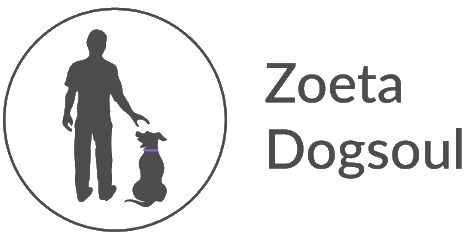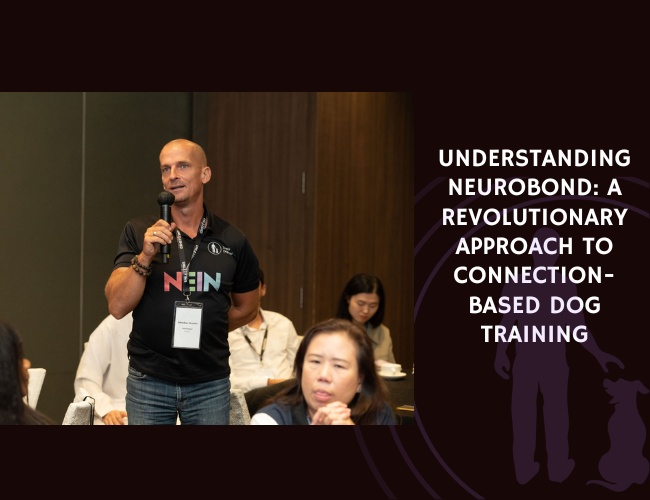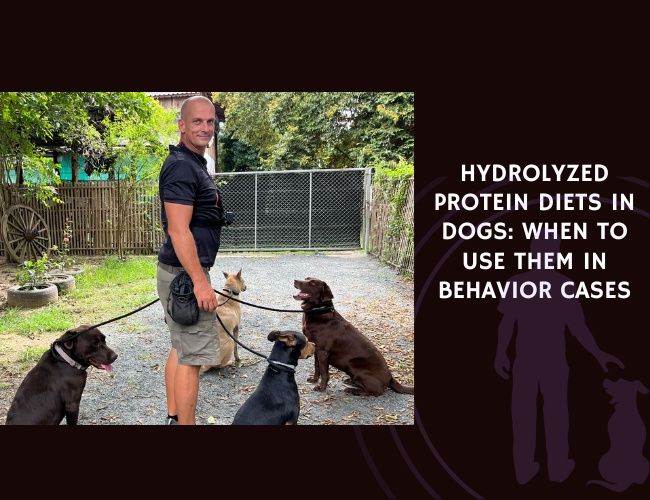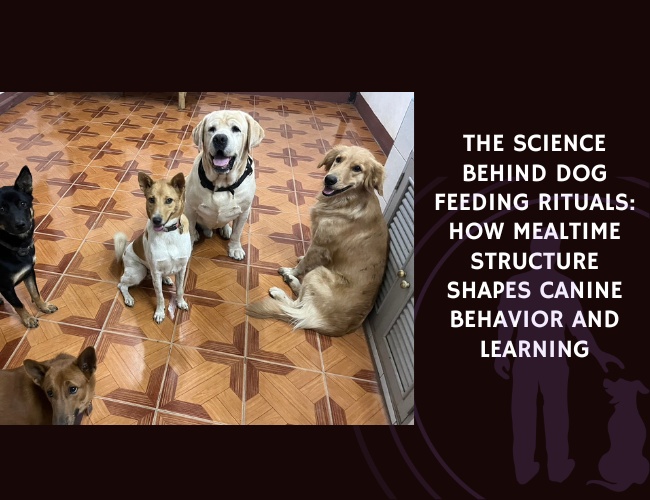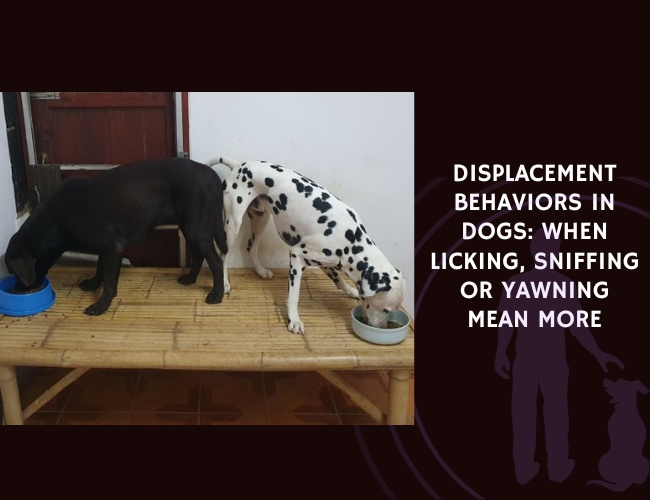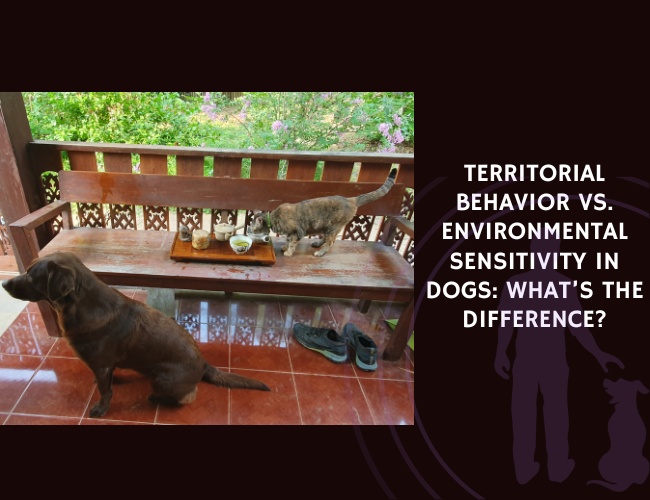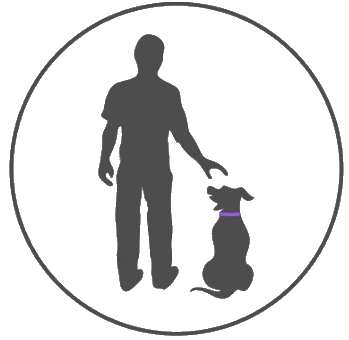Understanding the Spectrum of Canine Aggression
When we consider the behavior of our canine companions, aggression can sometimes be a confusing and multifaceted issue. It’s not just a simple case of ‘good dog’ versus ‘bad dog’. There are various forms and nuances of aggression that experts recognize, each with its own set of descriptions and categories. But what exactly does this mean for dog owners and enthusiasts trying to understand their furry friends and address any aggressive tendencies?
Understanding the different forms and nuances of aggression in dogs is crucial for dog owners and enthusiasts as it helps them recognize and address potential issues effectively. Here are a few key points to consider:
1. Types of aggression: Aggression in dogs can manifest in various ways, including fear aggression, territorial aggression, protective aggression, resource guarding, dominance aggression, social aggression, and predatory aggression. Each type has specific triggers and underlying causes.
2. Recognizing signs: Dogs may display different body language signals when they feel threatened or aggressive. These can include growling, barking, snapping, lunging, raised hackles, stiff body posture, showing teeth, and biting. It’s essential for dog owners to learn to interpret these signs accurately to prevent escalation.
3. Understanding triggers: Aggression in dogs can be triggered by various factors such as fear, anxiety, past traumatic experiences, lack of socialization, resource competition, frustration, or a desire to protect their territory or family. Identifying the specific trigger(s) can help in developing an appropriate behavior modification plan.
4. Seeking professional help: Dealing with aggression in dogs can be challenging, and it is advisable to consult a professional, such as a certified dog trainer or animal behaviorist, who can conduct a thorough assessment and provide guidance tailored to your dog’s specific needs.
5. Positive reinforcement training: Training techniques based on positive reinforcement are generally recommended for addressing aggression in dogs. This involves rewarding desired behaviors and redirecting or managing situations that trigger aggression. Punishment-based methods can worsen aggression and should be avoided.
6. Consistency and patience: Addressing aggression in dogs requires consistency, patience, and time. It is crucial to establish clear boundaries, manage the dog’s environment to prevent triggers, and gradually expose them to controlled situations that help them overcome their fears or anxieties.
7. Safety precautions: While working on modifying aggressive behavior, it’s crucial to prioritize safety for both the dog and others. This may involve using muzzles or other safety equipment as needed and implementing management strategies like secure fencing or leashing when in public spaces.
By understanding the complexities of aggression in dogs and taking appropriate steps to address it, owners and enthusiasts can help their furry friends lead happier, more balanced lives. It’s important to remember that each dog is unique, and a personalized approach is often necessary to effectively manage and modify aggressive behavior.
The Multifaceted Nature of Canine Aggression
Firstly, let’s delve into the range of aggressive behaviors seen in dogs. These can include protective aggression, where a dog acts to guard something it values, or possessive aggression related to objects like toys or food. There’s also fear-related aggression, usually a defensive response to a perceived threat, and dominance aggression, which involves a dog asserting its perceived status over others, whether canine or human. Each type of aggression has its own triggers and behaviors, making the landscape complex for those looking to classify or manage these actions.
Challenges of Classification
Compounding this complexity is the lack of a standardized classification system for canine aggression. The terminology used by professionals varies widely, from functional descriptors like ‘prey-oriented’ to situational ones like ‘pain-related’. This creates a significant hurdle for both theoretical understanding and practical intervention. Without a clear framework, it can be difficult for researchers to link individual problems to biological contexts or for pet owners to follow consistent advice on managing aggression.
Aggression Towards Family Members
Despite these classification challenges, one clear trend is the prevalence of aggression cases towards people, particularly within a dog’s social group or family. Such incidents can stem from competitive aggression or so-called dominance aggression, where the dog and a family member may compete for resources or status. Interestingly, evidence suggests that a significant percentage of aggression in domestic dogs is moderate to severe, especially when directed at family members. This emphasizes the importance of understanding the roots and expressions of canine aggression for creating safe and harmonious human-dog relationships.
Classifying Aggression: Targets and Triggers
When we consider the behavioral issues that pet owners face with their canine companions, understanding the target of a dog’s aggression and the situations that trigger these behaviors is crucial. Dogs don’t just show aggression for the sake of it; their behavior is influenced by a variety of factors and occurs in specific contexts. This classification, while not standardized, helps to categorize aggression types based on empirical evidence – an approach that stems from the practical experiences of veterinary consultants and behavioral experts. Understanding these aggression types can help pet owners and professionals develop appropriate strategies to address and manage the behavior.
One common type of aggression is fear-based aggression. Dogs may display aggressive behaviors such as growling, snapping, or biting when they feel threatened or scared. This aggression is often triggered by specific situations or stimuli that the dog perceives as threatening. For example, a dog may become fearful and aggressive when approached by strangers or in crowded environments. Understanding the triggers for fear-based aggression can help pet owners avoid or minimize these situations, and gradually desensitize and counter-condition the dog to reduce their fear response.
Another type of aggression is protective aggression. Dogs may exhibit this behavior when they perceive a threat to their territory, resources, or family members. This can manifest as barking, lunging, or even biting. Understanding the dog’s need for security and guidance can help pet owners establish clear boundaries and provide proper training to prevent or manage protective aggression.
Redirected aggression is another common form of aggression seen in dogs. This occurs when a dog is unable to direct their aggression towards the perceived threat and instead redirects it onto a more accessible target. For example, if two dogs are engaged in a fight and a person attempts to intervene, one of the dogs may redirect their aggression towards the person. Recognizing the signs of escalating aggression and avoiding triggers can help prevent redirected aggression incidents.
Some dogs may display territorial aggression, which is focused on defending their space. They may exhibit aggressive behaviors towards unfamiliar people or animals that enter their territory. Proper socialization and training can help alleviate territorial aggression and teach dogs appropriate behaviors when encountering new individuals or animals in their environment.
Finally, frustration-based aggression can occur when a dog becomes frustrated or overly aroused due to a lack of access to desired resources or opportunities. This can lead to aggressive behaviors such as barking, jumping, or biting. Providing appropriate outlets for physical and mental stimulation, along with consistent training, can help mitigate frustration-based aggression.
Understanding the different types of aggression and their underlying triggers is essential for pet owners and professionals to address and manage behavioral issues in dogs. By identifying the root causes of aggression and implementing appropriate training and behavior modification techniques, pet owners can create a safe and harmonious environment for both themselves and their canine companions.
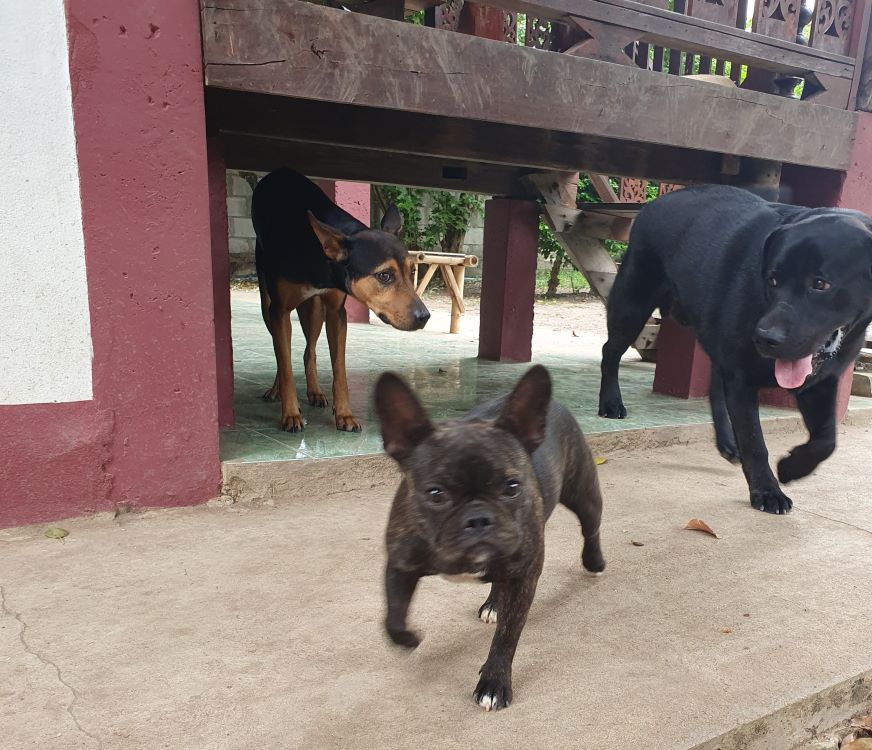
Aggression Toward Humans and Other Dogs
Aggression in dogs often has a clear target – sometimes it’s directed at humans, and other times, at other dogs. The distinction between interspecific aggression (towards humans) and intraspecific aggression (towards other dogs) is made evident in many cases presented to professionals. A significant amount of these aggressive behaviors occur within the dog’s social group or family, pointing to a complex interplay of relationship dynamics.
The Many Faces of Canine Aggression
Diversity is the keyword when it comes to types of aggression in our furry friends. Some dogs exhibit possessive aggression when they guard their food or toys. Others may show protective aggression if they perceive a threat to their owners or themselves. Fear-induced aggression can occur when a dog feels cornered or scared, and dominance-related behaviors might be seen when a dog is trying to assert its place in the social hierarchy. Each type of aggression requires a unique understanding and approach for management.
Understanding What Triggers Aggression
What flips the switch to make a dog go from calm to aggressive? Various situations can be triggers, and recognizing these is pivotal for prevention and treatment. Pain is a natural trigger for aggression; a dog in discomfort is more likely to react negatively to touch or interaction. Punishment can also backfire, leading to defensive aggression instead of obedience. And let’s not forget competitive scenarios – even something as simple as vying for a preferred resting spot can result in an aggressive response.
By acknowledging the multifaceted nature of canine aggression – its targets, types, and triggers – we gain the insight needed to address these behaviors effectively. Being attuned to the signs of aggression and understanding the underlying causes allows us to create safer environments for both dogs and their human families.
Dominance Aggression: A Common Challenge in Family Settings
Domestic tranquility can be shattered by the emergence of dominance aggression, a type of behavior not uncommon in the canine world. The statistics paint a vivid picture: approximately 38% of dogs exhibiting aggression show moderate to severe levels of this behavior towards their family members. The question then arises, what does ‘dominance’ truly mean in the context of our pets, and how does it disrupt the harmony of a household?
It is essential to acknowledge that the term ‘dominance aggression’ can often be misapplied or misunderstood in the context of canine behavior. Many dog owners may hastily label their dog as ‘dominant’ when the animal displays assertive or unwanted behaviors. However, it is crucial to understand that what might be perceived as dominance could actually be a manifestation of insecurity or fear.
A thorough and professional evaluation by a qualified animal behaviorist or certified dog trainer is necessary to accurately diagnose the root cause of aggressive behavior. Mislabeling a dog as dominant without understanding the underlying factors can lead to inappropriate or ineffective management strategies. In some cases, dogs act out of anxiety or a lack of confidence, which requires an entirely different approach than what would be used for managing true dominance-related aggression.
Therefore, before concluding that a dog’s aggressive behavior stems from dominance, it is important to consider other potential explanations, such as past trauma, insufficient socialization, or even medical issues that could be contributing to the behavior. It is only through careful observation, consideration of the dog’s history, and professional assessment that one can determine the appropriate course of action to help the dog and ensure the safety and well-being of all involved.
Interpreting Dominance Aggression Statistics
Understanding the dynamics at play within domestic settings begins with numbers. Studies indicated that out of a sampling of aggressive canine cases, an astounding 91% involved male dogs. These figures highlight the prevalence of such challenges families face when navigating the complexities of canine hierarchy and territoriality. The impact is significant, affecting the well-being of both the pet and its human companions.
The Concept of Dominance in Dogs
Dominance in dogs is often misunderstood and oversimplified. It’s not merely about being ‘the alpha’; it’s a complex interplay of behaviors and interactions. In a family setting, dominance aggression may manifest when a dog perceives its status within the social group is being challenged. This could occur during competition for resources – such as food, toys, or even attention from another pet or person deemed as ‘valuable’ by the dog.
Real-Life Manifestations of Dominance Aggression
Case studies provide a window into the real-life implications of dominance aggression. Take, for example, a scenario where a dog growls or snaps when a family member approaches while it’s eating or playing with a favorite toy. Such incidents underscore the importance of recognizing and managing these behaviors early on to maintain a safe environment and a positive human-dog relationship. Let’s examine a few instances that shed light on this issue:
- A family introduces a new pet into the home, causing the resident dog to display aggressive behaviors to assert its perceived rank.
- A dog regularly guards its resting spot, showing aggression when approached by family members, signaling a bid for control over territory.
- Routine activities like grooming or vet visits become fraught with tension as the dog asserts its dominance through aggressive postures or vocalizations.
In each case, the behavior has profound effects on the dynamic within the family, often leading to stress, fear, and potential harm if not properly managed.
As we navigate through this blog post, it’s clear that understanding the full spectrum of canine aggression is crucial. We’ve previously explored the numerous targets and triggers of aggression, including protective, possessive, and fear-induced behaviors. Recognizing dominance aggression as a part of this spectrum allows us to see the broader picture and tailor interventions accordingly. And as we look ahead, we’ll delve deeper into other forms of aggression, such as fear-based responses and the perplexing ‘cage fever,’ to further our comprehension and enhance our ability to create peaceful coexistence between humans and their canine companions.
In closing this section, let’s reflect: dominance aggression, while challenging, is a manageable aspect of dog behavior. With proper understanding, training, and sometimes professional intervention, families can mitigate these issues and foster a loving and respectful bond with their furry friends. Acknowledging the complexity of this behavior is the first step towards a harmonious household.
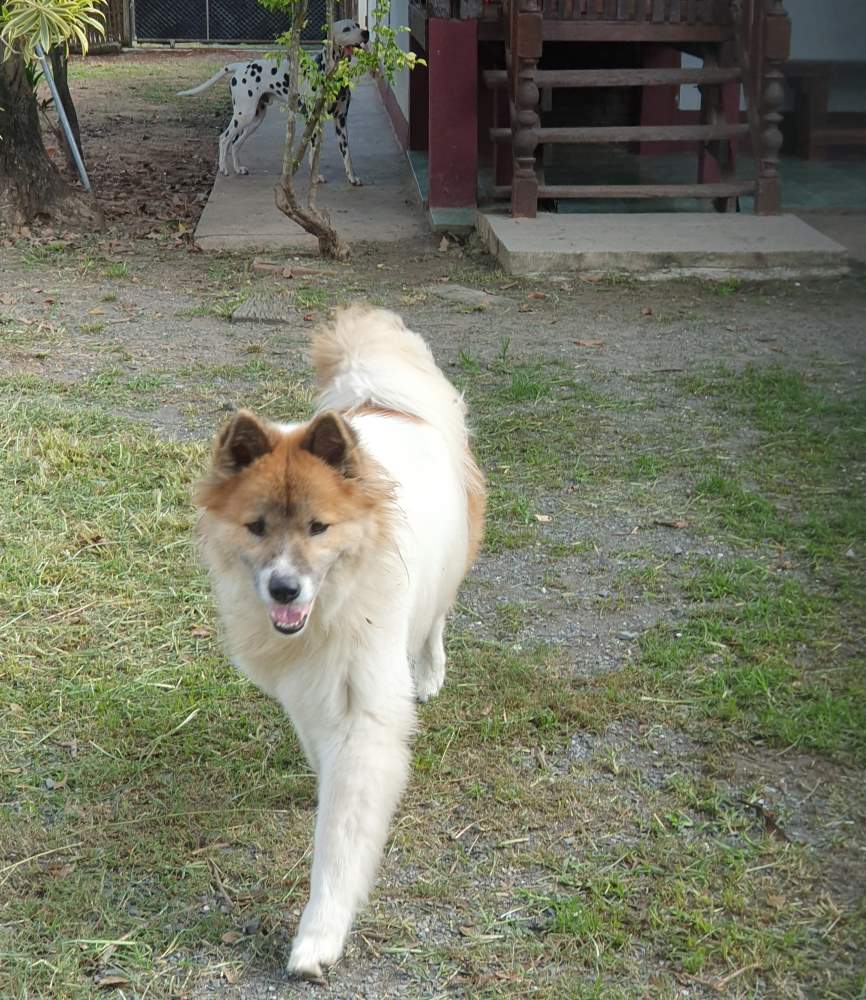
Fear-Based Aggression and Lack of Early Socialization
When considering the puzzle of canine behavior, fear-based aggression stands out as particularly troubling. Such aggression is often rooted in intense and irreversible fear caused by insufficient early experiences. Puppies go through a critical developmental period within the first three to four months of life, which behavioral researchers mark as paramount for social development and species identification. This stage essentially sets the stage for how adult dogs perceive and interact with the world around them, including humans and other dogs. During this crucial period, puppies need to have positive experiences with various stimuli, such as people, other animals, and different environments, to learn that they are safe and not a threat.
When puppies are deprived of these essential experiences or exposed to negative encounters during their early socialization period, they may develop fear-based aggression later in life. This aggression is a defensive response triggered by fear, as the dog perceives a potential threat and feels the need to protect itself.
Fear-based aggression can manifest in different ways, depending on the individual dog and the specific situation. Some dogs may display subtle signs of fear, such as cowering, trembling, or avoiding eye contact. Others may exhibit more overt aggressive behaviors, including growling, barking, lunging, or even biting.
Addressing fear-based aggression requires a multifaceted approach. First and foremost, it is crucial to ensure the dog’s safety and the safety of those around them. If a dog is displaying aggressive behaviors, it is essential to consult with a professional, such as a veterinarian or a certified dog behaviorist, who can assess the situation and provide guidance.
Treatment for fear-based aggression typically involves a combination of behavior modification techniques and desensitization and counterconditioning exercises. These methods aim to change the dog’s emotional response to the triggers that cause fear and aggression, gradually teaching them to associate positive experiences with previously fear-inducing situations.
Additionally, providing a consistent and nurturing environment for the dog is essential. Building trust and strengthening the bond between the dog and their owner can help the dog feel more secure and reduce their fear-based responses.
It is important to note that fear-based aggression is a complex issue, and each case should be approached individually. Patience, persistence, and professional guidance are key when working with dogs exhibiting fear-based aggression, as it requires time and effort to address and modify these behaviors effectively.
The Critical Socialization Period
The importance of the initial months in a puppy’s life cannot be overstated. This period is when puppies learn to navigate their environment, develop social cues, and build relationships. A lack of positive experiences with various people, environments, and other animals during this time can lead to a lifelong fear of the unknown. Such fear may manifest as aggression when the dog is confronted with unfamiliar situations or beings, perceived as threats to their well-being.
Preventing Fear-Based Aggression Through Socialization
Early socialization plays a crucial role in preventing fear-based aggression. Exposing puppies to a wide range of stimuli, including different types of people, animals, sounds, and environments, helps them develop confidence and adaptability. These experiences teach them that not every new situation or individual poses a threat, reducing the likelihood of fear-driven responses. However, it is essential that these exposures are positive or neutral to avoid inadvertently reinforcing fear.
Understanding Interspecific Aggression
Interspecific aggression, which occurs between individuals of different species – such as dogs towards humans – could be viewed as an outcome of inadequate early social experiences. Dogs may not recognize humans as part of their social group due to limited interaction during their formative months. As a result, they might display aggressive behaviors typically reserved for conspecific confrontations when feeling threatened by human actions or presence.
The Enigma of “Cage Fever” Syndrome
Imagine a dog who greets its family with wagging tail and affectionate licks, yet cowers or snarls when a stranger approaches. This is the paradox of a complex type of aggression known as “cage fever.” The term paints a picture of an animal that behaves normally within the confines of its familiar environment but becomes aggressively fearful towards outsiders. But what contributes to this dichotomous behavior?
Dual Behavioral Tendencies
The phenomenon of “cage fever” presents a stark contrast in a dog’s behavior. With family members, these dogs exhibit the typical signs of a well-adjusted pet. However, introductions to strangers can trigger fear-related aggression. This split in behavior suggests that the dog’s aggressive response is not indiscriminate but rather targeted, based on its perception of a threat.
Analyzing the Paradox
The paradox of “cage fever” is not only puzzling for dog owners but also challenging for behavioral experts to understand. It raises questions about the animal’s psychological state and its ability to discern between familiar individuals and potential threats. How does the same dog that curls up at its owner’s feet at home transform into a frenzied, anxious creature in the presence of a stranger? This extreme shift signals the complexity of canine cognition and emotion, which are influenced by a myriad of factors from genetics to past experiences.
Potential Contributing Factors
Several psychological and environmental factors may contribute to “cage fever.” A lack of early socialization experiences, as mentioned in previous sections, can lead to an inability to properly identify and interact with non-familial humans. These dogs may perceive anyone outside their immediate social circle as a potential threat. Another explanation might be past negative encounters with strangers, which could condition the dog to react defensively. Environmental stressors, such as living in confined spaces without adequate mental stimulation or physical exercise, could exacerbate the issue.
Understanding “cage fever” requires delving into the dog’s history and environment. Some dogs, for example, might have been raised in isolation from a diverse range of human contacts, leading them to view unfamiliar people with suspicion. Others may have experienced trauma or inadequate care during critical developmental stages, which can profoundly impact their reactions to various situations.
Implications for Human-Dog Relationships
The implications of “cage fever” for human-dog relationships are significant. It highlights the need for early, positive interactions with a variety of people to build a dog’s confidence and trust. It also underscores the importance of continued socialization throughout a dog’s life to maintain their adaptability and sociability. For families facing this challenge, it is crucial to seek professional guidance to manage and potentially rehabilitate fear-based aggression safely and effectively.
As we move forward, understanding and addressing the root causes of behaviors like “cage fever” will be paramount in fostering harmonious human-dog bonds and ensuring the well-being of our canine companions.
Moving Forward: Addressing Canine Aggression
In the intricate tapestry of canine behavior, aggression stands out as a particularly challenging thread to unravel. Recognizing its complexity is not just an academic exercise; it’s a critical step towards effective management. When we consider aggression in dogs, it’s essential to acknowledge that no two cases are identical.
Why is this recognition so important? Simply because misinterpreting a dog’s aggressive behavior can lead to ineffective or even counterproductive responses. Aggression can stem from fear, protection of resources, or social challenges within the family unit, as seen in cases of dominance aggression. As we’ve learned from previous sections, such as the enigma of “cage fever,” the triggers and manifestations of aggression are vast and varied. Therefore, individualized assessment becomes indispensable.
Why One Size Doesn’t Fit All
Imagine trying to use a single key for every lock; it simply won’t work. The same goes for addressing canine aggression. An intervention strategy that proves successful for a dog displaying possessive aggression over its toys may be wholly inappropriate for another dog showing fear-based aggression due to past trauma. This is where individualized assessment steps in, taking into account not only the type of aggression but also the dog’s history, environment, and relationship with its human companions.
The Role of Tailored Intervention Strategies
Once a thorough understanding of a dog’s specific aggression triggers and patterns is achieved, intervention strategies can be tailored accordingly. These strategies may include behavioral modification techniques, changes in the dog’s environment, management of resources, and sometimes medical intervention, depending on the underlying cause. Professional help from veterinarians and animal behaviorists becomes crucial at this juncture to ensure that the strategies employed are safe, humane, and effective.
For example, if a dog exhibits aggression when its food is approached, a behaviorist might suggest desensitization exercises combined with positive reinforcement to reduce the dog’s resource guarding tendencies. This approach would differ significantly from the one needed for a dog that becomes aggressive when startled, which might involve creating a more predictable environment and controlled exposure to stimuli.
Encouraging Continued Research and Education
While much has been learned about canine aggression, there is still a long road ahead. Continued research and education are vital for deepening our theoretical understanding and refining practical approaches. This could mean developing more nuanced classification systems for aggression, exploring the genetic and neurobiological underpinnings of aggressive behavior, or advancing training methodologies.
An informed community of dog owners, supported by professionals committed to continuing education, can significantly impact how aggression is managed. Workshops, seminars, and accessible resources for dog owners can contribute to a broader understanding of the issue, leading to more compassionate and effective responses when aggression does occur.
To sum up, recognizing the multifaceted nature of canine aggression is pivotal. It ensures that each dog receives an assessment and intervention plan as unique as they are, thus maximizing the chances of successful management. Encouraging ongoing research and education will, in turn, nurture a community equipped to handle the complex challenges of canine aggression with understanding and expertise. Together, these efforts pave the way for safer and more harmonious interactions between dogs and the humans who care for them.
Conclusion

Through our exploration of canine aggression, we’ve uncovered a tapestry of intricate behaviors and triggers. This complexity often leaves owners feeling overwhelmed, yet equipped with the knowledge we’ve imparted, there’s a clear pathway to understanding and managing these challenges. Let’s recap the key insights we’ve gained along this journey.
Dog aggression is not a one-size-fits-all issue. It manifests in various forms, from dominance-related incidents within the family unit to fear-based reactions prompted by a lack of early socialization. Recognizing these diverse patterns is vital for any responsible dog owner. Understanding that aggression can stem from confusion, fear, or even a response to pain, rather than outright hostility, helps us empathize with our canine companions.
However, empathy alone isn’t enough. When aggression arises, it’s crucial to seek professional help. Trained behaviorists and veterinarians can provide individual assessments, getting to the root of aggressive behavior. Their expertise allows for tailored intervention strategies that may include behavioral modification techniques or environmental adjustments. This professional guidance is indispensable because managing aggression effectively often requires more than just love and good intentions; it requires informed action.
Responsible pet ownership extends beyond feeding and walks—it encompasses understanding your dog’s psychological needs. Early socialization plays a pivotal role in shaping a well-adjusted dog. During a puppy’s critical developmental period, positive interactions with different people, dogs, and environments lay the foundation for a well-socialized adult dog. These experiences help prevent the development of fear-based aggression, making early and varied exposure to the world an essential aspect of responsible dog rearing.
Education is another pillar supporting responsible pet ownership. Continuous learning about canine behavior helps owners recognize warning signs and address aggression before it escalates. Resources such as books, seminars, and online courses are readily available and can offer invaluable insights into the canine psyche.
The complexity of aggression in dogs, with its multifaceted nature and varied manifestations, underscores the need for a nuanced approach to management. It’s not merely about discipline; it’s about understanding, compassion, and a willingness to seek and implement professional advice. As we strive to create harmonious living arrangements between humans and their canine friends, let us remember that every growl or snap is a communication attempt, and it’s our responsibility to listen and respond appropriately.
Let this be our call to action: to embrace the role of informed, compassionate guardians for our furry family members. By recognizing the signs of aggression, actively seeking professional assistance, prioritizing early socialization, and committing to ongoing education, we can foster safer, happier relationships with our canine companions.
